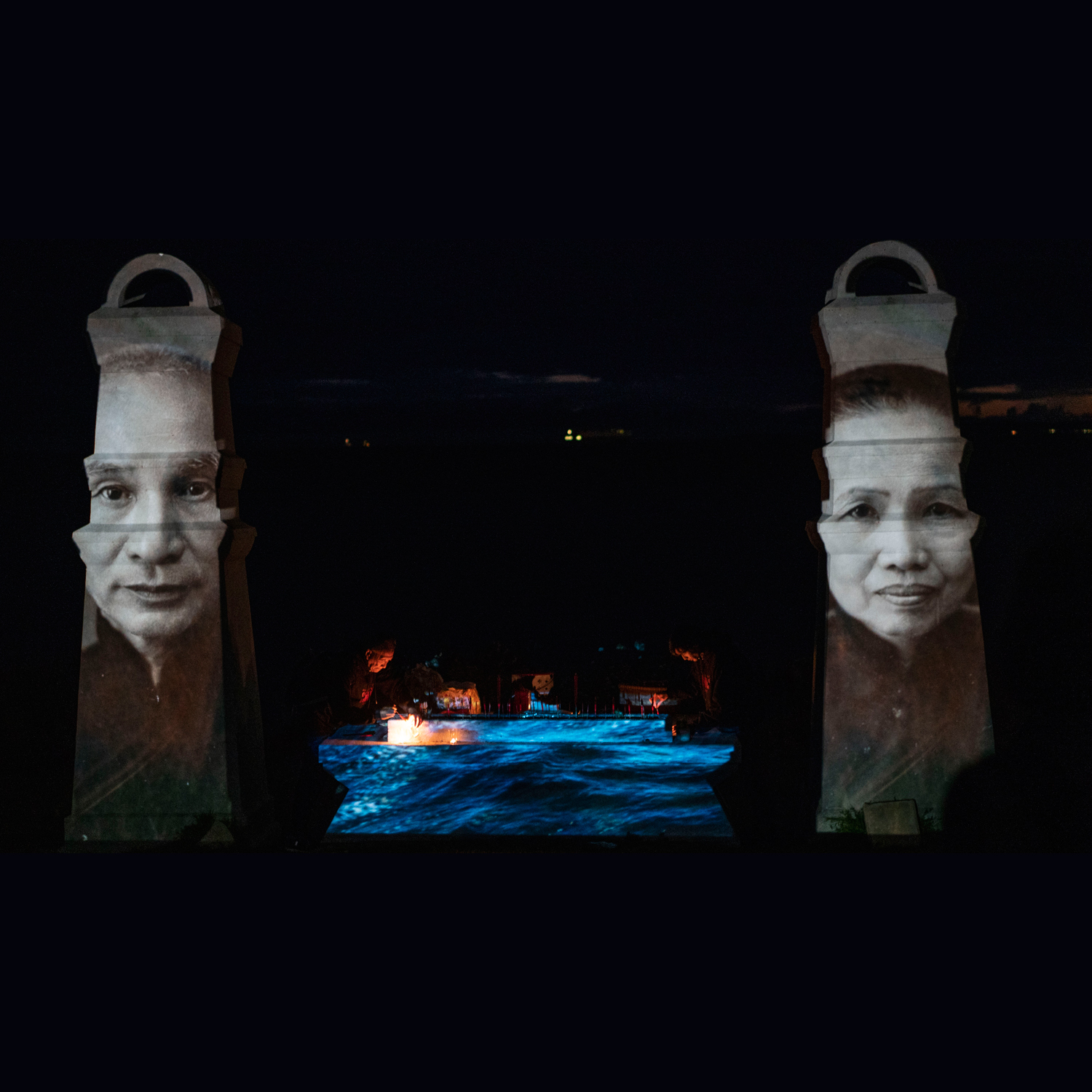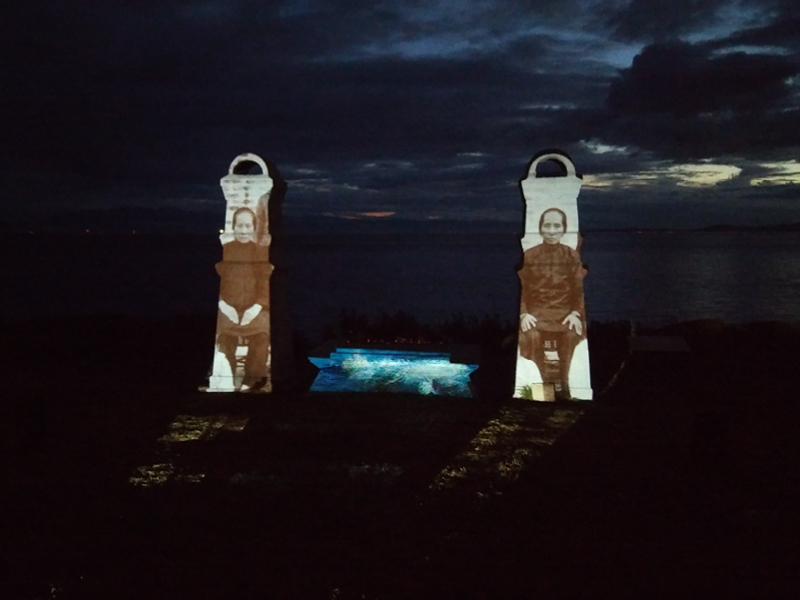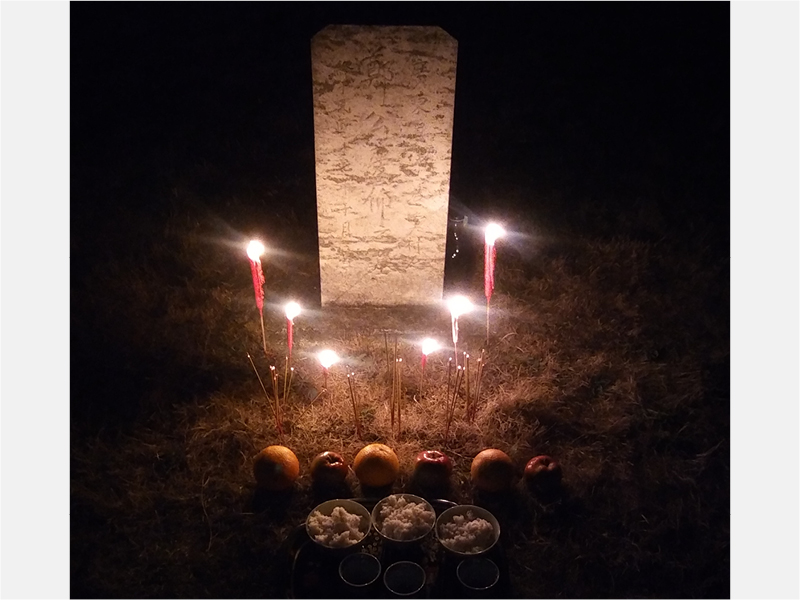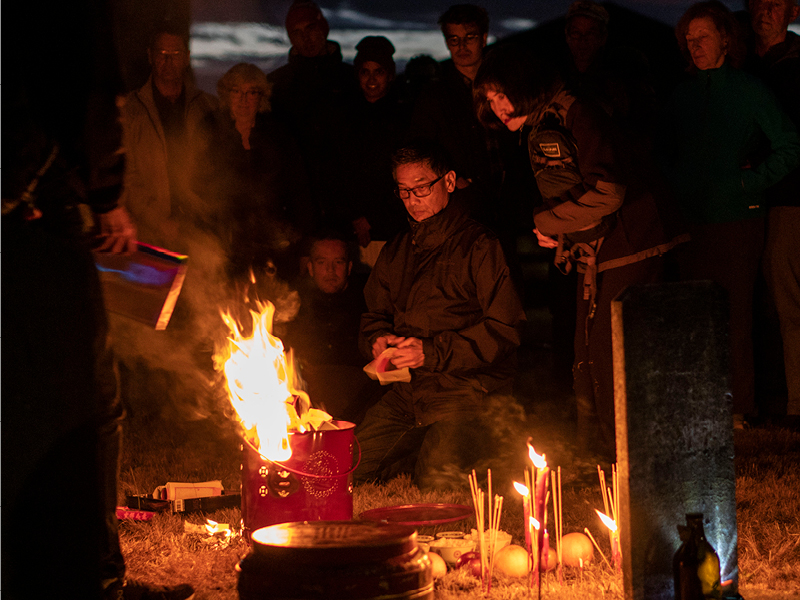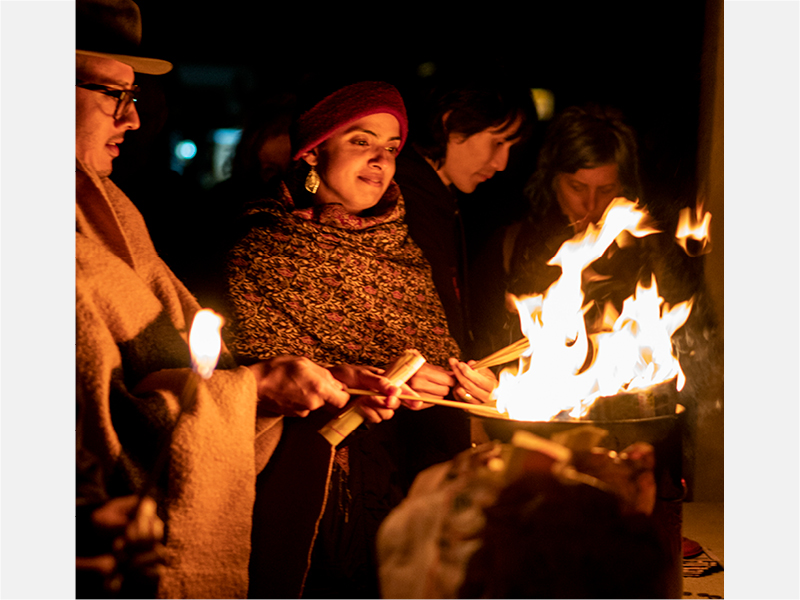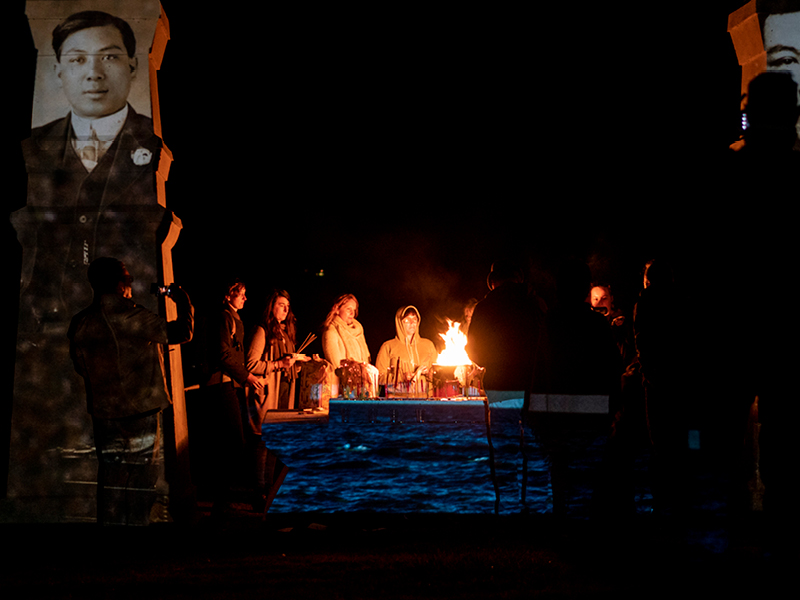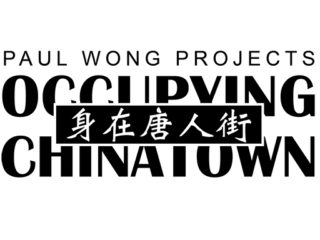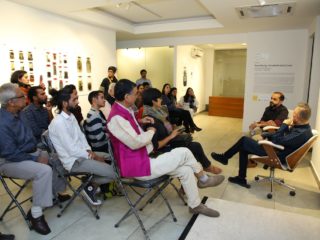The Chinese Bone Collector
Paul Wong, in collaboration with Jeffery Chong, 2018
3:24, colour, sound, in English
video projection mapping
In Fall 2018, Paul Wong and Jeffery Chong, along with six other artists, were commissioned by Victoria’s Flux Media Art Gallery to create Invocations: Video Projections About Place and Time, a series of site-specific public video mapping projections around Victoria, BC, from September 12 to 18. Artists chose the locations, and created works focusing on the history associated with these places.
The Chinese Bone Collector took place in the Chinese Cemetery at Harling Point on September 12, 2018 at sunset. The two-part event was comprised of a ritual performed by Jeffery Chong and his family that honoured the memory of his great-grandfather, 鄭慶仰 Chong Hing Young (1874-1928), who is buried in this cemetery. This was an intimate ritual of ancestral worship at the grave where Chong and his parents burned joss sticks, joss paper, spirit money, and gave food offerings.
This was followed by an experiential video mapping projection, honouring the memory, and the spirits of other sojourners whose bones were never returned to China. The mapping took place at the altar on the shoreline facing west towards home, China. Participants were given joss items to burn at the altar to celebrate their own deceased relatives. This Chinese practice involved using all five senses: sight, sound, smell, taste, and touch.
The Chinese Bone Collector video incorporates re-worked footage from Wong’s previous work Chinaman’s Peak: Walking the Mountain (1992), where a reenactment of a Chinese bone collector (played by Wong) unearths and collects bones for their safe transport back to China. This footage is intertwined with contemporary 16mm footage (filmed by Chong) of the Chinese Cemetery, and archival photographs belonging to both the Wong and Chong families.
The Chinese Cemetery at Harling Point was opened in 1903 by the Chinese Consolidated Benevolent Association. This location was the only Chinese cemetery in the region, and acted as a temporary place of rest for deceased Chinese settlers before their eventual return to their ancestral home villages in China. The dead were traditionally buried for seven years to allow for complete decomposition, after which they would be disinterred, and their bones cleaned and dried for their final journey back to China. The remains of many Chinese workers from across Canada were collected by bone collectors. Many of these remains in this cemetery were never shipped back to the motherland due to interrupted shipping during the Japanese occupation of China and Hong Kong during WWII, then followed by the Communist revolution and the founding of the People’s Republic of China in 1949. The Chinese Cemetery is designated a National Historic Site by the Government of Canada, and is the oldest of its kind in North America.

